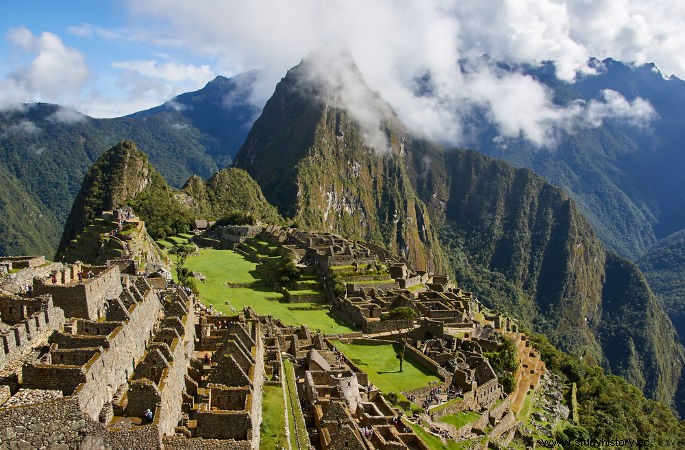
The conquest of the Incas was an undertaking carried out by the Spanish expedition led by Francisco Pizarro . This expedition, which had about 200 men, found the Inca Empire divided by a civil war and took advantage of this to dominate this people. Until that time, the Incas controlled vast regions, which extended into the lands that today comprise Colombia, northern Chile and Argentina.
Incas
The Inca Empire was a great indigenous empire that flourished from the region of present-day Peru. This grandiose domain was formed by several battles and the conquest of indigenous peoples who inhabited the region. Its territory was very extensive, with about 4 thousand kilometers, according to historian Marianne Mahn-Lot|1| .
The Incas called their empire Tahuantinsuyu , which translated from Quechua (its official language) means “empire of the four directions”. The Inca Empire was ruled by an emperor called Sapa Inca , and according to Inca history, the first emperor was called Pachacuti and assumed the throne around 1438. The Inca capital was Cuzco .
When the Spaniards arrived in the Inca regions during the 16th century, they found the Empire divided because of a civil war fought between the two sons of the last emperor, named Huayna Capac . The sons of Capac, Atahualpa and Huáscar , disputed the succession to the throne of the Inca Empire.
Atahualpa had great influence among the three generals of the empire, Chalcuchima , Quiz and Rumiñahui , and over the north of the Inca domain, mainly over Quito . Huáscar already controlled the capital Cuzco and had great influence over the lands to the south. The dispute between the two led Huáscar to attack Atahualpa in Quito. However, Huáscar was defeated and taken prisoner by his brother's troops.
Arrival of Francisco Pizarro
Pizarro's expedition arrived in the Inca lands exactly at the moment of greatest fragility of the Inca domain, as the civil war between Huáscar and Atahualpa had weakened the empire. This expedition had departed from a region called Castilla del Oro (current Panama), at the beginning of 1531, with the objective of reaching the Inca territory.
Francisco Pizarro was a Spanish commoner who arrived in America in 1513. He was given dominions by the Spanish Crown in the Castilla del Oro region, where he dealt with the threats of the Caribbean Indians. In 1527, Pizarro set out on an expedition that explored the Ecuadorian coast. On this expedition, he heard news about a great and rich empire in a region called “Biru”.
The expedition of conquest of the Incas led by Pizarro only left, in fact, in 1531, after receiving the royal authorization to carry out it. Pizarro then left Panama with “three ships, 200 men, 27 horses”|2| . As soon as he arrived in the regions of the Inca Empire, he learned through his interpreters of the conflict between Huáscar and Atahualpa.
Next, Pizarro set out to meet Atahualpa, the victor of the Inca civil war. Atahualpa and his troops were installed in a region called Cajamarca , from where they would depart towards Cuzco. The Spaniards were welcomed by the Inca leader peacefully, however, reports say that a disagreement arose and, after that, a large massacre by the Spaniards followed.
The disagreement between the Spaniards and the Incas happened after these indigenous people refused to convert to Catholicism. During the fighting, Atahualpa was taken prisoner and, to prevent Huáscar from making an alliance with the Spaniards, he sent secret orders to kill him. To guarantee his freedom, Atahualpa promised a room full of gold to the Spaniards.
The Inca leader fulfilled his promise and handed over a large amount of precious metals to his enemies in Spain. The Spaniards, however, did not release Atahualpa, and shortly afterwards they executed him on orders from Francisco Pizarro. With his death, the Inca Empire weakened considerably.
Finally, the Spanish appointed an indigenous ally, Manco Capac, as emperor. Then they conquered the two great Inca cities:Cuzco and Quito. To facilitate contact with Panama, Pizarro founded the city of Lima. He remained in the region until he was assassinated in 1541.
|1| MAHN-LOT. Marianne. The conquest of Spanish America. Campinas:Papirus, 1990, p. 50.
|2| Ditto, p. 52.
Take the opportunity to check out our video lessons related to the subject:
